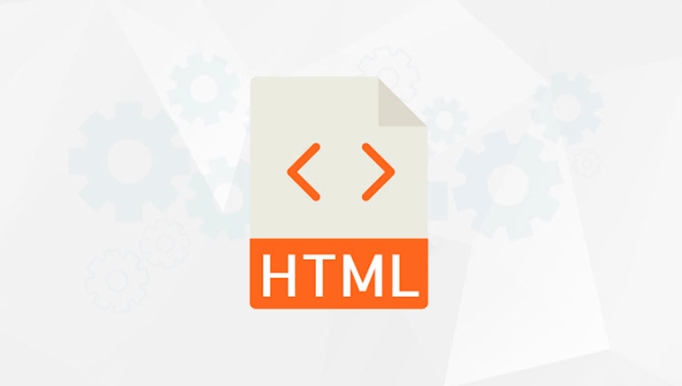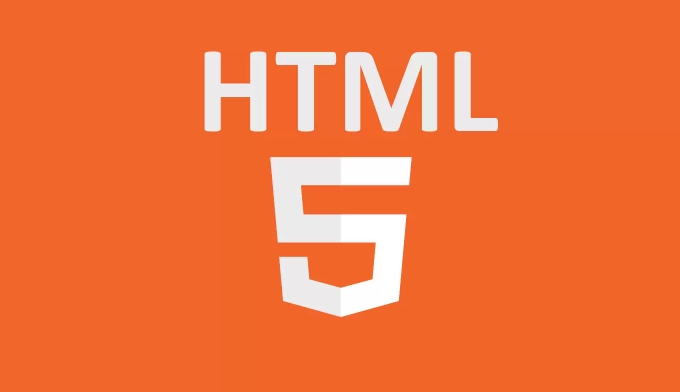itemref is an attribute in Microdata that is used to disperse content in associated pages. Its main purpose is to enable elements that do not belong to the current item scope to become part of the object, thereby implementing remote references. How to use it includes: 1. Add item scope and unique id to the main object; 2. Use itemref to reference the id of other elements on the main object; 3. The referenced element must have itemprop and the id is consistent with the itemref list. Applicable scenarios include layout restrictions, multiplexing structures, CMS systems, etc. Notes include: It can only be used for elements with item scope, the target elements must be the same page, the id must be unique, not all tools support itemref, it is recommended to use Google tools to test and verify.

Sometimes when using Microdata to annotate structured data in a web page, an element will encounter an element that needs to reference attributes defined elsewhere on the page. At this time itemref attribute comes in handy.

What is itemref ?
itemref is a property in Microdata that is used to associate content that does not belong to the current item (i.e., objects defined through itemscope ). Normally, Microdata properties must be nested inside the corresponding itemscope element, but if you have some extra information elsewhere and don't want to mess up the structure, you can use itemref to "remote reference".
For example, if you want to mark the information of a book, but the author information of the book is placed in another area of the page, you can use itemref to connect these two parts.

How to use itemref ?
When using itemref , the main steps are as follows:
- Add
itemscopeanditemidto the main object (optional) and assign it an id. - Write
itemref="目標(biāo)id1 目標(biāo)id2"on the main object to list the id of the external element you want to reference. - The referenced elements themselves must contain the
itempropattribute, and their id must be consistent with theitemreflist of the main object.
To give a simple example:

<div itemscope itemtype="http://schema.org/Book" itemref="bookAuthor"> <h1 itemprop="name">JavaScript Advanced Programming</h1> </div> <div id="bookAuthor"> <span itemprop="author">Nicholas Zakas</span> </div>
This way the search engines can know that "Nicholas Zakas" is the author of the book, even if it is not inside the main object's tag.
Which scenarios are suitable for itemref ?
Some common usage scenarios include:
- Page layout restrictions make it impossible to put everything in one block.
- Reuse existing HTML structures to avoid too much code changes for Microdata.
- The content structure generated by some CMS or template systems is fixed, making it inconvenient to adjust nested relationships.
For example, in the product details page of an e-commerce website, the price information may be rendered separately in a floating column, and the product description is in another module. In this case, you can use itemref to spell them into a complete Microdata object.
It should be noted that although itemref is convenient, do not abuse it. Try to keep the structure clear and semantic reasonable, otherwise later maintenance or debugging may be more troublesome.
Some things to note
-
itemrefcan only be used on elements withitemscope. - The referenced target element must be within the same page.
- The id must be unique in the same page, otherwise it may lead to parsing errors.
- Not all search engines or parsing tools fully support
itemref, and testing and verification are recommended.
If you want to confirm whether your Microdata is correct, you can check it with Google's Rich Results testing tool.
Basically that's it. Using itemref properly can make structured data more flexible, but don't let it get too tangled with HTML.
The above is the detailed content of The `itemref` Attribute for Microdata. For more information, please follow other related articles on the PHP Chinese website!

Hot AI Tools

Undress AI Tool
Undress images for free

Undresser.AI Undress
AI-powered app for creating realistic nude photos

AI Clothes Remover
Online AI tool for removing clothes from photos.

Clothoff.io
AI clothes remover

Video Face Swap
Swap faces in any video effortlessly with our completely free AI face swap tool!

Hot Article

Hot Tools

Notepad++7.3.1
Easy-to-use and free code editor

SublimeText3 Chinese version
Chinese version, very easy to use

Zend Studio 13.0.1
Powerful PHP integrated development environment

Dreamweaver CS6
Visual web development tools

SublimeText3 Mac version
God-level code editing software (SublimeText3)
 Applying Semantic Structure with article, section, and aside in HTML
Jul 05, 2025 am 02:03 AM
Applying Semantic Structure with article, section, and aside in HTML
Jul 05, 2025 am 02:03 AM
The rational use of semantic tags in HTML can improve page structure clarity, accessibility and SEO effects. 1. Used for independent content blocks, such as blog posts or comments, it must be self-contained; 2. Used for classification related content, usually including titles, and is suitable for different modules of the page; 3. Used for auxiliary information related to the main content but not core, such as sidebar recommendations or author profiles. In actual development, labels should be combined and other, avoid excessive nesting, keep the structure simple, and verify the rationality of the structure through developer tools.
 Implementing Clickable Buttons Using the HTML button Element
Jul 07, 2025 am 02:31 AM
Implementing Clickable Buttons Using the HTML button Element
Jul 07, 2025 am 02:31 AM
To use HTML button elements to achieve clickable buttons, you must first master its basic usage and common precautions. 1. Create buttons with tags and define behaviors through type attributes (such as button, submit, reset), which is submitted by default; 2. Add interactive functions through JavaScript, which can be written inline or bind event listeners through ID to improve maintenance; 3. Use CSS to customize styles, including background color, border, rounded corners and hover/active status effects to enhance user experience; 4. Pay attention to common problems: make sure that the disabled attribute is not enabled, JS events are correctly bound, layout occlusion, and use the help of developer tools to troubleshoot exceptions. Master this
 Configuring Document Metadata Within the HTML head Element
Jul 09, 2025 am 02:30 AM
Configuring Document Metadata Within the HTML head Element
Jul 09, 2025 am 02:30 AM
Metadata in HTMLhead is crucial for SEO, social sharing, and browser behavior. 1. Set the page title and description, use and keep it concise and unique; 2. Add OpenGraph and Twitter card information to optimize social sharing effects, pay attention to the image size and use debugging tools to test; 3. Define the character set and viewport settings to ensure multi-language support is adapted to the mobile terminal; 4. Optional tags such as author copyright, robots control and canonical prevent duplicate content should also be configured reasonably.
 Best HTML tutorial for beginners in 2025
Jul 08, 2025 am 12:25 AM
Best HTML tutorial for beginners in 2025
Jul 08, 2025 am 12:25 AM
TolearnHTMLin2025,chooseatutorialthatbalanceshands-onpracticewithmodernstandardsandintegratesCSSandJavaScriptbasics.1.Prioritizehands-onlearningwithstep-by-stepprojectslikebuildingapersonalprofileorbloglayout.2.EnsureitcoversmodernHTMLelementssuchas,
 How to associate captions with images or media using the html figure and figcaption elements?
Jul 07, 2025 am 02:30 AM
How to associate captions with images or media using the html figure and figcaption elements?
Jul 07, 2025 am 02:30 AM
Using HTML sums allows for intuitive and semantic clarity to add caption text to images or media. 1. Used to wrap independent media content, such as pictures, videos or code blocks; 2. It is placed as its explanatory text, and can be located above or below the media; 3. They not only improve the clarity of the page structure, but also enhance accessibility and SEO effect; 4. When using it, you should pay attention to avoid abuse, and apply to content that needs to be emphasized and accompanied by description, rather than ordinary decorative pictures; 5. The alt attribute that cannot be ignored, which is different from figcaption; 6. The figcaption is flexible and can be placed at the top or bottom of the figure as needed. Using these two tags correctly helps to build semantic and easy to understand web content.
 HTML for email templates tutorial
Jul 10, 2025 pm 02:01 PM
HTML for email templates tutorial
Jul 10, 2025 pm 02:01 PM
How to make HTML mail templates with good compatibility? First, you need to build a structure with tables to avoid using div flex or grid layout; secondly, all styles must be inlined and cannot rely on external CSS; then the picture should be added with alt description and use a public URL, and the buttons should be simulated with a table or td with background color; finally, you must test and adjust the details on multiple clients.
 What are the most commonly used global attributes in html?
Jul 10, 2025 am 10:58 AM
What are the most commonly used global attributes in html?
Jul 10, 2025 am 10:58 AM
class, id, style, data-, and title are the most commonly used global attributes in HTML. class is used to specify one or more class names to facilitate style setting and JavaScript operations; id provides unique identifiers for elements, suitable for anchor jumps and JavaScript control; style allows for inline styles to be added, suitable for temporary debugging but not recommended for large-scale use; data-properties are used to store custom data, which is convenient for front-end and back-end interaction; title is used to add mouseover prompts, but its style and behavior are limited by the browser. Reasonable selection of these attributes can improve development efficiency and user experience.
 How to handle forms submission in HTML without a server?
Jul 09, 2025 am 01:14 AM
How to handle forms submission in HTML without a server?
Jul 09, 2025 am 01:14 AM
When there is no backend server, HTML form submission can still be processed through front-end technology or third-party services. Specific methods include: 1. Use JavaScript to intercept form submissions to achieve input verification and user feedback, but the data will not be persisted; 2. Use third-party serverless form services such as Formspree to collect data and provide email notification and redirection functions; 3. Use localStorage to store temporary client data, which is suitable for saving user preferences or managing single-page application status, but is not suitable for long-term storage of sensitive information.






